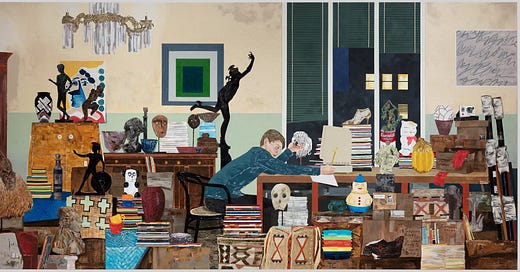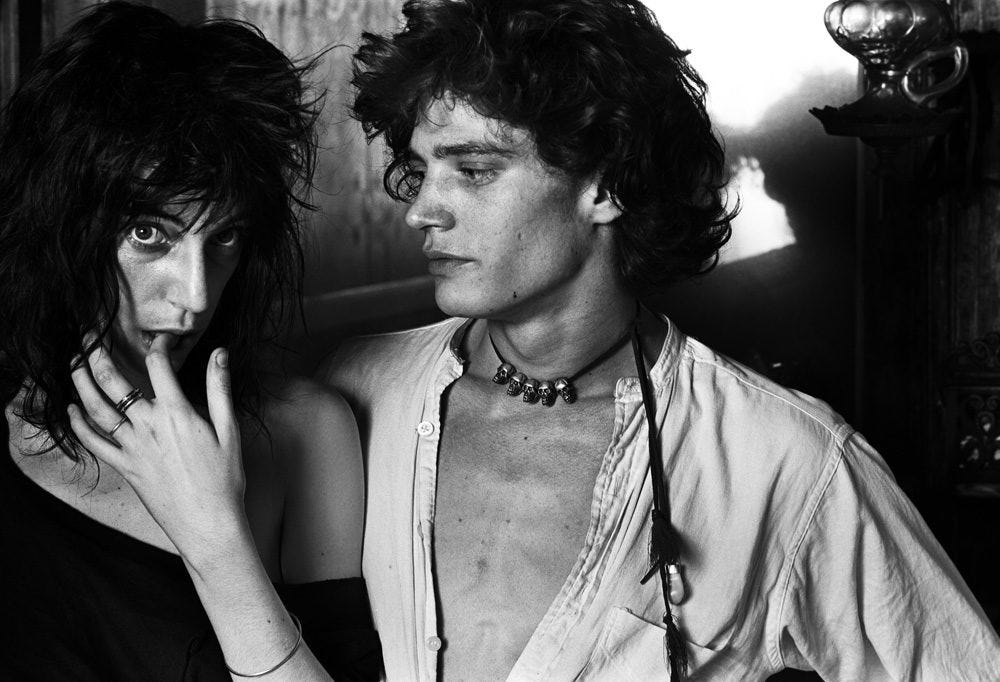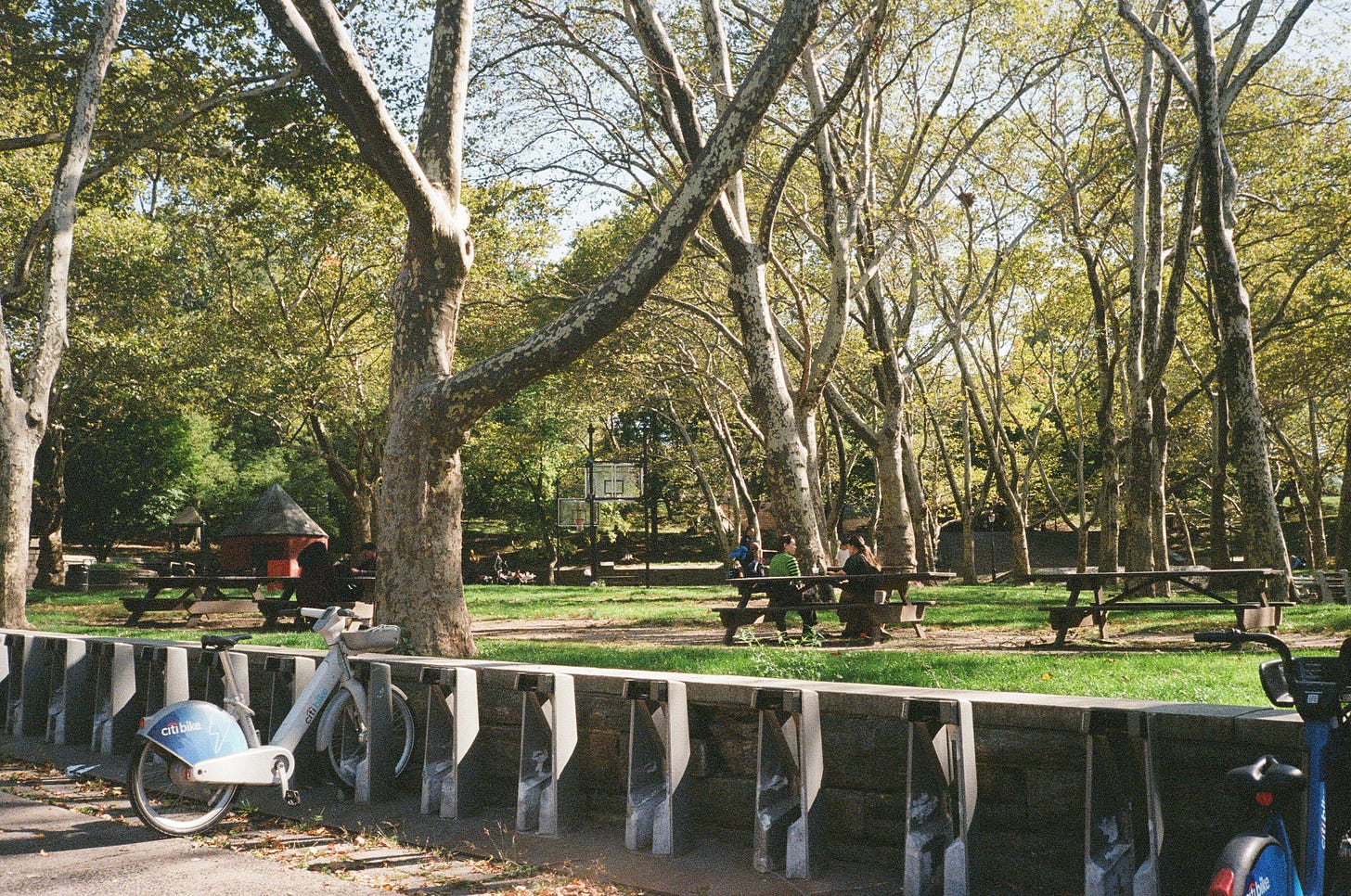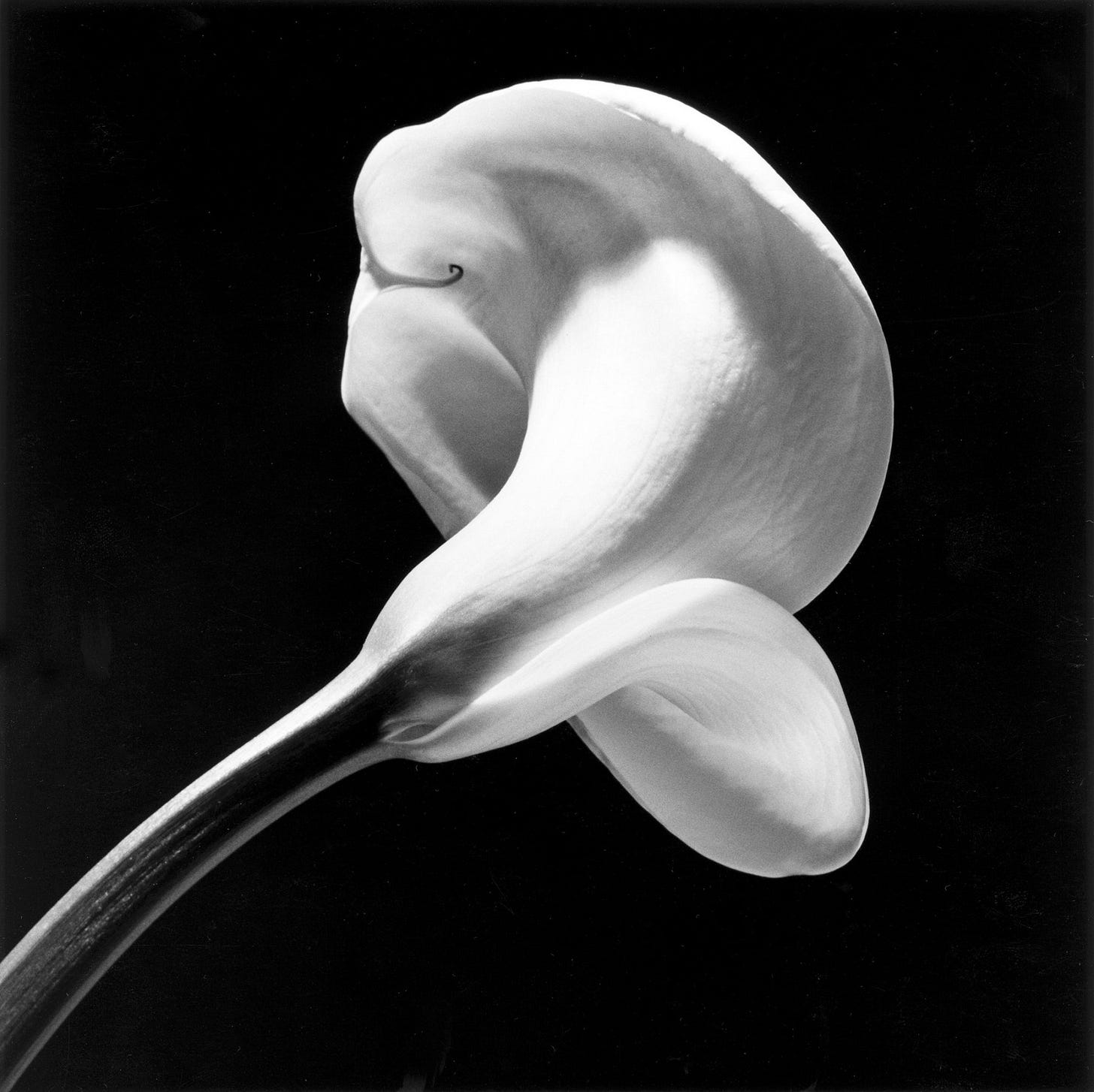PRELUDE
Hello from Korea!
Today I’m sharing an essay I wrote for a course called “Writing New York”, which aims to explore the relationship between the urban experience and artistic form, by studying the literary imagination of identity and community that emerged during the transformation of New York City post-WWII. It’s a class I really enjoyed and would recommend to all NYU students!
There was just no other option than to write about the New York City legend Patti Smith and her novel Just Kids which documents her arrival to the city and her relationship with artist Robert Mapplethorpe. I was very interested in the way she would talk about her own icons and celebrities that she looked up to like Andy Warhol. In a way, I was in awe of the way Smith manifested her artistry and celebrity status through her aspirations and endeavors. A lot of the book also details her curation process - collecting items for her home, recounting the celebrities she’s passed by, etc. It was only by chance I saw Hernan Bas’s painting of an overworked auction house intern cataloguing all of Andy Warhol’s possessions after his death while I was in Detroit doing research for a recent film project. This painting perfectly encapsulated what I felt witnessing a person’s life long journey becoming an artistic icon. It made me think how a lot of artistry is knowledge and history. It’s a curation (or amalgamation) of the art that precedes us, building our own tastes as artists, and then we get to re-contextualize it in a new and interesting way.
I explore some of these ideas and more in the essay down below, as well as a few things I’m enjoying lately :)
SMALL BITES
🪵 Twin Peaks (TV show)
Twin Peaks is a surreal and mysterious TV series that blends crime drama, supernatural elements, and small-town quirks as it follows an FBI agent investigating the murder of a high school student in a seemingly idyllic Washington town. I'm obsessed with the visceral world of the show and quickly became a Dale Cooper fan.
🫒 Olive Young (store)
My favorite go-to beauty store in South Korea has everything I could ever want and more. I picked up some UV-protecting face patches and the best hair serum ever from misè en scene.
📖 The Talented Mr. Ripley (novel)
The Talented Mr. Ripley is a psychological thriller novel about a charismatic con artist who assumes the identity of a wealthy young man and becomes entangled in a dangerous web of deceit and murder. Despite the similarities to the film and new Netflix TV show, the novel takes on a life of its own and pulls you in immediately. I would highly recommend taking a chance on reading it if you liked its adaptations!
WORDS
Courtesy of The Detroit Institute of Art
American artist Hernan Bas invites us to consider who Andy Warhol was, or rather the essence of what made him Andy Warhol. In Sorting Out Andy, Bas depicts an auction house intern hunched over a desk in a cluttered apartment. Antiques, paintings, and books make the floor barely visible. The solitary figure in the frame catalogs an overwhelming sea of idiosyncratic belongings for sale after Warhol’s death, as his left hand toys with his trademark white wig. The objects, such as the cheeky reference to a Campbell soup can carrying a withering plant, seem endowed with the spirit of Warhol, items that made up his aura, making them desirable and of high value. Bas’s painting implores a practice of identification between audience and celebrity, asking us to reflect on our ability to connect to artists through symbols and iconography long after their passing. A celebrity is not born but rather created through shared associations and the curated image of an individual. Thus viewers collectively create an understanding of an icon figure. Bas’s painting is aware that Warhol’s possessions like the wig were a fundamental device in his life for the creation and self-mythologized persona of “Andy Warhol”. It’s his possessions and his costume that created this self-aware machine-made celebrity-like identity that Warhol often commented on in his artworks. Mentions of Andy Warhol often appear in Just Kids, as Patti Smith and Robert Mapplethorpe’s emergence as renowned artists and their own invention of artistic life is told against the backdrop of New York City. In her memoir, Smith also chronicles the process of curation and myth-making that charts the path to artistic prominence. The possessions and spaces associated with an artist, such as those depicted in Hernan Bas's painting and discussed in Patti Smith's memoir, play a significant role in the creation of artistic identity and legacy.
Patti Smith and Robert Mapplethorpe in New York, 1970. Photo by Norman Seeff. Courtesy of Interview Magazine.
As Patti Smith reflects on her arrival to the city, we see the transformative power of New York as a space that not only attracts artists but demands creativity. Smith's experience aligns with the notion that the city is a beacon for aspirations, a place where people arrive not in search of satisfaction but driven by an unquenchable thirst for more, stating “I had my plan. I would seek out friends who were studying at the Pratt Institute in Brooklyn. I figured if I placed myself in their environment I could learn from them.” (Smith 23). Smith understood that merely being in the space of New York City and around other artists would provide more on a creative and intellectual level than her hometown where she was raised. Smith's memoir further delves into the displacement and “migrant” experience within the city, emphasizing the imagination and artistic eye required to carve out a unique space for creation. In the anonymity of urban spaces, inhabitants navigate a sea of possibilities, finding meaning in the plurality the city provides.
This area in Downtown Brooklyn/Clinton Hill is where Patti Smith and Robert Mapplethorpe move in together before moving to the Chelsea Hotel. Photo by me.
The memoir not only serves as a personal narrative but also as a profound exploration of the functions of memoir writing itself. Smith's recollections of the city are not just descriptions but rather a series of hazy imprints, stating “I have vague memories, like impressions on glass plates, of an old boathouse, a circular band shell, an arched stone bridge” from the beginning of her memoir (Smith 3). The ephemeral quality of memories and Patti Smith’s subjective perspective reflect the constantly changing nature of value. Remembering, as depicted by Smith, is not a straightforward act but rather an intricate process of rewriting, shaped by the cultural baggage and the hindsight of the present. Smith immediately reveals Robert Mapplethorpe’s passing before delving into her childhood before moving to New York, reshaping the timeline of events in the first few pages of the book. Smith assumes an editorial role in her memoir, deciding what to include and exclude, thus engaging in an archiving and presentation of her history and of her and Mapplethorpe’s relationship. This archival process involves choices that reflect not only her personal experiences but also the broader historical, social, and economic contexts. The memoir becomes a form of representation, an object of analysis that helps readers make sense of material objects and attachments she presents, offering insights into the coherence and dissonance within her life. The act of writing serves as a means of constructing and reconstructing the past, questioning what is worth keeping and what is not.
Calla Lily, 1984. Photo by Robert Mapplethrope. Courtesy of The Robert Mapplethorpe Foundation.
Patti Smith further illuminates the nuanced relationship between artistic expression, personal space, and the act of collecting. Smith's description of her early days as an artist, as she describes herself as “full of references” and illuminated by the "light and shadow" of Robert Mapplethorpe, suggests that taste-making and collecting were inherent aspects of her artistic journey (Smith 251). The notion of collecting extends beyond physical possessions to the creation of an artist's eye—an ability to discern, appreciate, and select elements that contribute to a distinctive artistic identity. This is evident in Smith's meticulous detailing of the possessions that adorned her apartment with Mapplethorpe, acquired through scavenging the streets and combining discarded items to create a uniquely personal space. Objects, for Smith, become more than mere possessions; they are talismans infused with memories and emotions. The act of collecting and arranging these objects contributes to the creation of a personal sanctuary, a space that reflects not only the artist's aesthetic sensibilities but also the shared experiences with a creative partner. As she recounts, “On trash night we scavenged the streets and magically found all we needed. A discarded mattress in the lamplight, a small bookcase, repairable lamps, earthenware bowls, images of Jesus and the Madonna in ornate crumbling frames, and a threadbare Persian rug for my corner of our world,” these recurring long descriptions listing objects transform into the extraordinary through the lens of artistic intention (Smith 44).
Smith's memoir delves into the significance of physical space, particularly her writing desk in her first apartment shared with Robert Mapplethorpe, as a center of creativity within the city. The "jumble of manuscript pages, musty classics, broken toys, and talismans" that populates Smith's work area becomes a microcosm of her creative mind (Smith 45). The writing desk, adorned with symbols and personal artifacts, transcends its physical form to represent a sacred space where the chaos of artistic creation finds order. The act of creation, as depicted by Smith, is intimately tied to the physical environment. The city, with its stimuli and opportunities for overstimulation, becomes both an inspiration and an obstacle. The memoir invites readers to consider the role of the city in shaping creative processes, emphasizing the intricate dance between chaos and order, inspiration and distraction. Furthermore, Smith's attachment to specific objects, such as sheets sent by her mother, highlights the intersection of personal and familial history within the creative process (Smith 45). The act of collecting becomes a way of navigating identity and projecting a desire for her own future icon status, as she “tacked pictures of Rimbaud, Bob Dylan, Lotte Lenyam, Piaf, Genet, and John Lennon,” and the creation of a "monastic mess" on her makeshift desk (Smith 45). The memoir underscores how material objects play a crucial role in shaping artistic environments and fostering the creative spirit.
Instagram (@stoopingnyc)
The legacy of artists is intricately woven into the fabric of their possessions, the spaces they inhabit, and the cities that shape their creative journeys. Patti Smith’s memoir contributes to the collective memory of cultural history through her own curation process of writing. As we reflect on the functions of such a memoir, the act of writing becomes a form of archiving, a way of selecting and presenting material objects and memories that contribute to the construction of artistic identity. Smith's memoir underscores the fluid nature of memory, suggesting that what we value and choose to remember is subject to change, influenced by cultural contexts and individual perspectives. In the bohemian realm of art-making, the act of collecting and curating physical possessions becomes a powerful means of expression. Objects, imbued with personal histories and emotions, transform mundane spaces into sanctuaries of creativity. The writing desk, within the city's landscape, symbolizes the convergence of chaos and order, the intricate dance of artistic creation. The exploration of artistic legacy, the city as a creative force, and the functions of memoir writing reveal a symbiotic relationship between artists and their environments. The remnants left behind—whether in a painting, a memoir, or a carefully curated space—contribute to a broader narrative that extends beyond the individual, shaping cultural histories and inspiring future generations of artists who come in search of New York City.
That’s all for today! Thank you for reading this chunky post. Please feel free to let me know what you thought :)
Skylar xx
![[banchan]](https://substackcdn.com/image/fetch/$s_!bzBv!,w_80,h_80,c_fill,f_auto,q_auto:good,fl_progressive:steep,g_auto/https%3A%2F%2Fsubstack-post-media.s3.amazonaws.com%2Fpublic%2Fimages%2F4020a6b2-7d75-439c-8957-0777f2e5fe65_1200x1200.png)

![[banchan]](https://substackcdn.com/image/fetch/$s_!bzBv!,w_36,h_36,c_fill,f_auto,q_auto:good,fl_progressive:steep,g_auto/https%3A%2F%2Fsubstack-post-media.s3.amazonaws.com%2Fpublic%2Fimages%2F4020a6b2-7d75-439c-8957-0777f2e5fe65_1200x1200.png)







Works Cited:
Bas, Hernan. Sorting Out Andy. 2018, Detroit Institute of Arts, Detroit, MI.
Smith, Patti. Just Kids. Ecco, 2010.